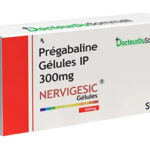Introduction
Imagine sitting in a room where everyone understands your pain—not because they’ve read about it, but because they’ve lived it too. That’s the power of group therapy for depression. When you’re feeling isolated in your struggle, finding a space where others “get it” can be life-changing. This article explores how group therapy can be a turning point in mental wellness, creating space for healing, understanding, and connection. Ready to unlock healing together? Let’s dive in.
What is Group Therapy?
Group therapy is a type of psychological treatment where a small group of people meet regularly to discuss their challenges, guided by a licensed therapist. Unlike one-on-one sessions, group therapy taps into the power of shared experience. Members not only receive support but also offer it—creating a dynamic and deeply human circle of healing.
Why Depression Needs More Than Just Solitude
When you’re depressed, isolation can feel like a security blanket. But here’s the truth: depression thrives in silence. Just like plants need sunlight, healing often requires connection. By joining a group, individuals break the cycle of loneliness and create space for understanding and growth.
How Group Therapy Works
In group therapy for depression, participants gather in a confidential setting—either in person or online. A trained therapist leads the sessions, ensuring structure and emotional safety. Activities may include:
-
Sharing personal stories
-
Practicing mindfulness
-
Cognitive-behavioral exercises
-
Peer feedback and discussion
Each session builds trust and helps members gradually open up.
Types of Group Therapy for Depression
Not all group therapies are the same. Here are some common types:
-
Cognitive Behavioral Therapy (CBT) Groups: Focuses on challenging negative thought patterns.
-
Support Groups: Emphasizes emotional connection and shared experiences.
-
Psychoeducational Groups: Educates members about depression and coping strategies.
-
Interpersonal Process Groups: Explores how relationships affect mental health.
Choosing the right type depends on your needs and comfort level.
Benefits of Group Therapy
Why do people keep coming back to group therapy? Because the benefits are real and powerful:
-
Connection: You’re no longer alone in your struggle.
-
Perspective: Hearing others’ stories can help you understand your own better.
-
Growth: Giving support can be as healing as receiving it.
-
Accountability: Regular meetings encourage progress.
-
Skills: Learn practical coping strategies from the group and therapist.
Think of it like joining a gym for your emotional health—with others spotting you along the way.
Common Myths About Group Therapy
Let’s bust a few myths:
-
Myth: “I’ll be forced to speak.”
Truth: You can share at your own pace. -
Myth: “It’s just people complaining.”
Truth: Groups focus on solutions and support. -
Myth: “Only people with severe problems go.”
Truth: Group therapy is for anyone seeking healing.
Don’t let fear or stigma keep you from something that could change your life.
A Safe Space: What to Expect in a Session
Walking into your first session might feel scary. But here’s what usually happens:
-
A brief check-in with everyone
-
A topic or activity led by the therapist
-
Open discussion and feedback
-
A closing reflection to end positively
Everything said stays in the room—confidentiality is key.
Stories of Hope: Real-Life Experiences
Many who’ve tried group therapy for depression describe it as a turning point. Like Sarah, who said:
“I came in thinking no one could possibly understand. I left knowing I wasn’t broken—just human.”
Or James, who found meaning in helping others:
“Supporting others helped me see my own strength. It was healing in ways I never expected.”
These stories aren’t rare—they’re echoes of what happens when people open up, together.
Choosing the Right Group for You
Not every group is the perfect fit—and that’s okay. Here’s how to find the right one:
-
Ask about the group’s focus (e.g., CBT, support, educational).
-
Check the size—smaller groups can feel more intimate.
-
Meet the therapist or facilitator beforehand if possible.
-
Attend a trial session before committing.
Think of it like finding the right pair of shoes—you need one that fits you comfortably.
The Role of the Therapist in Group Sessions
The therapist is not just a moderator. They:
-
Set the tone for safety and respect
-
Guide discussions with purpose
-
Help process emotional moments
-
Ensure everyone gets a chance to be heard
They’re like the conductor of an orchestra—making sure every voice blends into harmony.
Online vs. In-Person Groups
Technology has opened new doors. But which format is better?
-
Online groups offer flexibility and privacy. Ideal for those with social anxiety or limited mobility.
-
In-person groups allow deeper emotional connection through body language and presence.
Both can be effective. It’s about what works best for you.
How to Prepare for Your First Session
Nervous? Totally normal. Here are a few tips:
-
Arrive early to settle in.
-
Bring a notebook if you want to jot down thoughts.
-
Take deep breaths and remind yourself—you belong here.
-
Listen actively, even if you’re not ready to speak.
Remember: it’s okay to just be there. Showing up is a powerful first step.
Group Therapy vs. Individual Therapy
Both forms of therapy have value, but they serve different needs:
| Aspect | Group Therapy | Individual Therapy |
|---|---|---|
| Focus | Shared experiences, peer support | Deep personal exploration |
| Format | Interactive group setting | One-on-one with therapist |
| Benefits | Belonging, perspective, skill-sharing | Privacy, depth, focused attention |
| Ideal for | Reducing isolation, learning from others | Complex trauma, private issues |
Many people benefit from combining both.
Integrating Group Therapy into Daily Life
The magic doesn’t stop at the session door. Here’s how to keep growing:
-
Apply lessons from group to real-life situations.
-
Journal after sessions to reflect on insights.
-
Stay connected with peers (if appropriate).
-
Practice coping tools shared in the group.
Healing is a journey, and group therapy provides both the compass and the companions.
Taking the First Step Toward Healing
If you’ve made it this far, you’re probably curious—or even hopeful. That’s no small thing. Reaching out for help takes courage, and joining a group can feel like leaping into the unknown. But it’s worth it. In the words of one participant:
“Group therapy didn’t fix me—it helped me fix myself.”
So, take a breath. You don’t have to do this alone. Healing is possible. Together.
Frequently Asked Questions
1. Is group therapy for depression as effective as individual therapy?
Yes, for many people, group therapy is equally effective—especially in reducing isolation and building coping skills.
2. How long does group therapy usually last?
It varies. Some groups run for a few months, while others are open-ended. Sessions typically last 60–90 minutes weekly.
3. What if I don’t feel comfortable speaking in a group?
That’s okay. You’re not required to speak right away. Most people open up gradually as they feel more comfortable.
4. Can I attend both group and individual therapy?
Absolutely. In fact, many therapists recommend combining both for well-rounded support.
5. Are online group therapy sessions effective for depression?
Yes. Virtual sessions can offer flexibility and comfort—especially for those who prefer staying in their own space.
- Group Therapy for Depression: Healing in Community
- Discover how group therapy for depression can help you heal, grow, and connect. Learn how shared experiences spark transformation.
- Group Therapy
Related posts:
 Best Topical Finasteride & Minoxidil Spray for Hair Regrowth
Best Topical Finasteride & Minoxidil Spray for Hair Regrowth
 What Are the Key Considerations Before Getting Filler Injections?
What Are the Key Considerations Before Getting Filler Injections?
 Dr. Kami Hoss Gives Out the Truth About Brushing & Flossing-Protecting Your Teeth
Dr. Kami Hoss Gives Out the Truth About Brushing & Flossing-Protecting Your Teeth
 Effective Weight Loss Clinic Killeen: Your Path to Lasting Results
Effective Weight Loss Clinic Killeen: Your Path to Lasting Results
 How to Prepare for Your Appointment with the Best Plastic Surgeon in dubai for Fillers
How to Prepare for Your Appointment with the Best Plastic Surgeon in dubai for Fillers
 Comment les analgésiques sur ordonnance se comparent-ils aux options en vente libre ?
Comment les analgésiques sur ordonnance se comparent-ils aux options en vente libre ?
 Prozenith: A Natural Weight Loss Supplement 70% OFF Discount
Prozenith: A Natural Weight Loss Supplement 70% OFF Discount
 Recovery and Aftercare Tips for Gynecomastia Patients in Dubai
Recovery and Aftercare Tips for Gynecomastia Patients in Dubai








